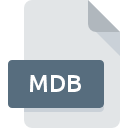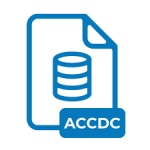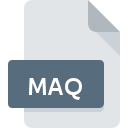.MDB File Extension

Microsoft Access Database
| Developer | Microsoft |
| Popularity | |
| Category | Database Files |
| Format | .MDB |
| Cross Platform | Update Soon |
What is an MDB file?
The .MDB file extension stands for “Microsoft Database,” and it primarily denotes database files created and utilized by Microsoft Access.
These files store data in a structured format, allowing users to organize, manage, and manipulate large volumes of information efficiently. With Microsoft Access, users can create databases ranging from simple lists to complex relational databases with advanced functionalities.
More Information.
Microsoft Access was developed as a part of the Microsoft Office suite, aiming to democratize database management for small businesses, academic institutions, and individual users.
The .MDB file extension served as the default file format for databases created in Microsoft Access.
In its early days, Microsoft Access offered a graphical user interface (GUI) that allowed users to design tables, create queries, forms, and reports without requiring extensive programming knowledge.
This approach made database development more accessible to a broader audience, fostering widespread adoption.
Origin Of This File.
The .MDB file extension has its roots deeply embedded in the evolution of Microsoft Access. Initially released in 1992, Microsoft Access revolutionized database management for Windows users.
It provided an intuitive interface combined with powerful database capabilities, making it accessible to both novice and experienced users alike.
File Structure Technical Specification.
The .MDB file format follows a structured schema, encapsulating various database components such as tables, queries, forms, reports, macros, and modules.
Internally, the .MDB file utilizes the Microsoft Jet Database Engine to manage data storage, indexing, and retrieval operations.
The technical specifications of the .MDB file format include:
- Tables: Store data in rows and columns.
- Queries: Retrieve and manipulate data based on specified criteria.
- Forms: Present data in a user-friendly interface for data entry and viewing.
- Reports: Generate formatted documents for printing or electronic distribution.
- Macros: Automate repetitive tasks or execute predefined actions.
- Modules: Contain Visual Basic for Applications (VBA) code for customizing database functionality.
How to Convert the File?
Converting .MDB files to other formats or migrating to alternative database systems may be necessary to address compatibility issues or leverage advanced features. Several methods can be employed for file conversion:
- Export to Different Formats: Microsoft Access provides options to export data to various formats such as Excel, CSV, or XML, enabling interoperability with other applications.
- Database Migration Tools: Third-party migration tools offer automated solutions for converting .MDB files to alternative database systems like MySQL, PostgreSQL, or SQLite.
- Manual Export and Import: Alternatively, users can manually export data from Microsoft Access and import it into another database system using standard data manipulation tools.
Advantages And Disadvantages.
Advantages:
- Ease of Use: Microsoft Access offers a user-friendly interface for database design and management.
- Integration: Seamlessly integrates with other Microsoft Office applications, facilitating data exchange and collaboration.
- Rapid Development: Allows for quick prototyping and development of database applications.
- Scalability: Supports databases of varying sizes and complexities, from personal projects to enterprise solutions.
Disadvantages:
- File Size Limitation: .MDB files have a size limitation, restricting scalability for large datasets.
- Limited Concurrent Users: Not suitable for high-concurrency environments due to limitations in simultaneous access.
- Security Concerns: Historically, .MDB files have faced security vulnerabilities, necessitating caution in deployment.
- Platform Dependency: Primarily designed for Windows, limiting cross-platform compatibility.
How to Open MDB?
Open In Windows
- Microsoft Access: The most straightforward method is to use Microsoft Access, which is part of the Microsoft Office suite. Double-clicking the .MDB file should automatically open it in Access if it’s installed on your system.
- Microsoft Access Runtime: If you don’t have Microsoft Access installed, you can use the Microsoft Access Runtime version, which allows you to run Access applications without the need for a full installation of Access.
- Third-Party Tools: There are several third-party tools available for opening .MDB files on Windows, such as MDB Viewer Plus or MDB Tool.
Open In Linux
- LibreOffice Base: LibreOffice Base is a free and open-source database management tool included in the LibreOffice suite. It supports opening and editing .MDB files on Linux systems.
- MDB Tools: MDB Tools is a set of open-source utilities for working with .MDB files on Unix-like systems, including Linux. It provides command-line tools for viewing and converting .MDB files.
Open In MAC
- MDB Viewer Plus: While primarily designed for Windows, MDB Viewer Plus can be run on macOS using compatibility layers like Wine or CrossOver. It allows you to view and edit .MDB files on macOS.
- LibreOffice Base: Similar to Linux, LibreOffice Base is available for macOS and can be used to open and edit .MDB files.
Open In Android
- Microsoft Access Mobile App: Microsoft offers a mobile version of Access for Android devices. You can use this app to open and interact with .MDB files on your Android device.
- Third-Party Apps: There are third-party Android apps available on the Google Play Store that claim to support opening .MDB files. However, ensure you choose a reputable app with good reviews to avoid security risks.
Open In IOS
- Microsoft Access Mobile App: Similar to Android, Microsoft Access is available for iOS devices through the App Store. You can use this app to open and interact with .MDB files on your iPhone or iPad.
- Third-Party Apps: There might be third-party iOS apps available on the App Store that claim to support opening .MDB files. Again, exercise caution and choose apps from trusted developers.













